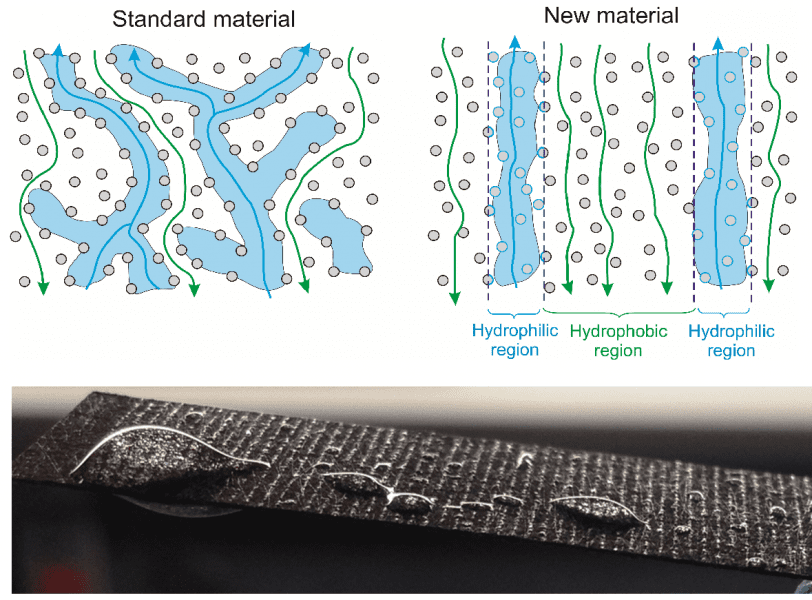Polymer electrolyte fuel cells (PEFCs) powered by hydrogen can achieve high efficiency and power density with zero emission, making them an attractive replacement for fossil fuel fed engines. As the only reaction product, water is crucial to cell performance: while a certain amount of water is required to humidify the membrane, an excessive quantity hinders the access of gas to the reactant sites.
Now, Antoni Forner-Cuenca and co-workers at Paul Scherrer Institut (Switzerland) report a method to regulate water pathways in the gas diffusion layer (GDL), a porous carbon fiber-based paper responsible for the fine distribution of reactant gases, the conduction of electricity and heat, and the removal of product water. The material is locally irradiated with electrons using masks and a hydrophilic monomer is grafted on the hydrophobic coating in these activated regions.
Compared with state-of-the-art materials where water pathways are randomly distributed through hydrophobic coating, the reported strategy enables highly flexible pattern design and has a good potential for upscaling.











